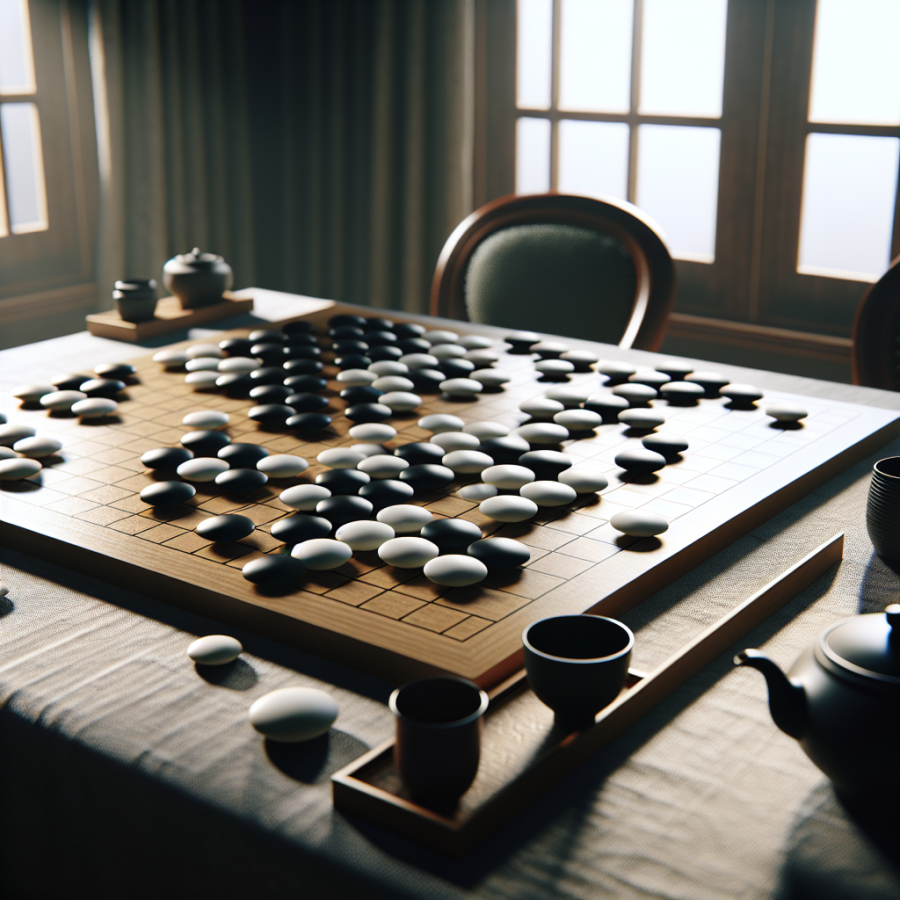Unveiling the Complexities of Go: Understanding Its Time-Honored Tactical Landscape
In the multi-faceted universe of Go, also known as baduk or weiqi, the tactical landscape forms a critical underpinning that distinguishes novices from maestros. This intricate dimension of Go is not merely about placing stones on a 19x19 grid; it's a dance of strategy, foresight, and profound tactical acumen.
The concept of "aji," which loosely translates to "taste" or "potential," is central in understanding the tactical richness of Go. Aji refers to the latent possibilities that reside within the configuration of stones on the board. Skilled players can read the shifting sands of aji, seeing not just the present stone positions but also foretelling explosive sequences that can be triggered, thereby transforming the holistic picture of the game.
"Tesuji," the term for a skillful or clever play, is the tactical sword that players wield deftly to slice through complex situations. A series of detailed tesuji can lead to a dramatic capture, the rescue of a seemingly lost group, or the connection of stones across a tenuous divide. These are the keys to unlocking advantageous positions and require a deep well of pattern recognition and practice to implement effectively.
The art of "sente" and "gote" plays a pivotal role in the struggle for tactical supremacy. An action in sente forces a response; it gives the initiative, putting the opponent on the backfoot. Gote, by contrast, relinquishes that initiative. It is this push and pull for sente that often informs tactical skirmishes, with expert players constantly calibrating their moves to avoid gote unless it yields a significant trade-off.
"Battling over ko" introduces another layer of tactical complexity. Ko, a situation where repeated captures can occur, represents a cyclical battle that can only be broken by creating threats elsewhere—threats significant enough to command the opponent's attention. These ko fights introduce elements of strategy, gambling, and psychological warfare as players assess and provoke vulnerabilities.
Life and death scenarios or "tsumego" problems are the proving grounds for a player's tactical strength. These are situations where the focus is on the survival or demise of stone groups. Being proficient at solving tsumego is a testament to a player's ability to navigate the thin line between triumph and catastrophe on the Go board.
Read also:
Breaking Down the Costs: How Much Do Golf Simulators Really Cost?"
Beyond the Basics: Advanced Strategies for Dominating the Go Board
Familiarizing oneself with the basic rules and tactics of Go only scratches the surface of this ancient game's strategic depths. It is within the intricate dance of stones, where power plays and subtle maneuvers culminate, that the true grandmasters distinguish themselves. Here, advanced strategies emerge, offering a competitive edge and a deeper understanding of the game's underlying principles.
Discovering the value of influence over territory can be a game-changer for intermediate players aiming to up their Go strategy. The concept of "sente," a move that forces an opponent to respond, maintains initiative and can dictate the flow of the game. Mastering sente allows for control of the game's pace and can lead to favorable exchanges or establish a strong, overarching board presence.
Furthermore, “tenuki,” the strategy of strategically ignoring an opponent's last move to play elsewhere, can be a challenging but effective tactic. It is here that the game transcends mere local skirmishes to encompass the full scope of the board. Recognizing when to tenuki, and when to stay engaged in a local fight, is a nuanced judgment that requires deep analysis and an understanding of the broader position.
"Tesuji" refers to clever tactical moves that resolve specific problems on the board. Advanced players study these patterns and apply them to real game situations, turning seemingly disadvantageous positions into opportunities. Techniques like “sabaki,” which aims to develop a weak group efficiently and with flexibility, or “ameba-shape,” which emphasizes formlessness and adaptability, can be powerful in the hands of a proficient player.
Go is not just about the immediate stones on the board; it is about the potential—referred to as "aji." Aji refers to the latent possibilities within a position, which can be awakened at the right moment to turn the tables. Understanding how to use and also how to extinguish your opponent's aji is critical for high-level play. Prospective moves may not have a direct impact immediately, but they lay the groundwork for future play, creating potential weaknesses or forcing responses later in the game.
A cornerstone of advanced Go strategy is the proverbial "reading" skill, which means calculating sequences of moves and counter-moves in one's head. This necessitates not only seeing the stones that are present but visualizing the ones that could appear several turns ahead. The longer the sequence one can accurately read, the more advantageous their position becomes.




